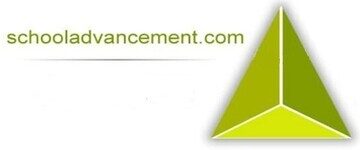One of the goals of higher learning is to create new knowledge. In fact, such a concept is the keystone of 21st Century education. We have to prepare our children to solve problems that haven’t even been thought of yet with tools that haven’t been created yet. Think of it as taking the axiom “Necessity is the mother of invention” to the “nth” degree.
In that respect, here is a new word to describe how things function in a system. A branch of study known as Systemics has been developing in response to the practices of Reductionism – that is, understanding the whole by learning about each of its parts.
One of the big problems with reductionism is that it is the main thought behind how our curriculum has been traditionally set up in every school across our nation – 45 minutes in Chemistry – 45 minutes in Spanish II – 45 minutes in Algebra II – 45 minutes in Health – and then it’s time for lunch (even though it’s only 10:30 in the morning, but that’s another topic for discussion). It’s no wonder our children can’t “understand” anything, and how knowledge needs to be connected with knowledge from other disciplines to create interdisciplinary knowledge.
Thank goodness there’s been a movement toward an integrated curriculum (even though parents freak out when they hear about block scheduling), but such an undertaking require a tremendous shift (dare I say “change” in this day and age). The compartmentalized model prepared our children to work in factories; today, they need an educational model in order to function in the world they will enter upon graduation.
When I was in school, the perfect study environment was at a desk with good lighting in a chair that was not very comfortable so one could focus attention on the matter at hand. When my kids were in high school (over a decade ago), they were able to work on homework on a computer with the television on, listening to an ipod with their cellphone nearby in case anyone sends them a text message. They could look up answers to questions on the Internet, and even join chat groups to study with kids taking the same subject.
Remember, that was OVER a decade ago. Back then, they “joined” online study groups; today, they “create” online study groups. And the rate of change due to technology will get even faster.
Some may say these children cannot focus on their work, but I’ve also seen my kids curl up with a book in a chair with a cup of tea and read. Yes, they can do it – but only if it interests AND ENGAGES them. When they were in high school, if you asked them how school was, they’d say, “It’s boring.” Guess what? They were right…especially if that 45-minute class schedule repeats every day. The content isn’t necessarily boring, but the way it’s presented may very well be. A teacher saying, “Well, I can’t make Chemistry any more exciting for you” does nothing to foster interest in the sciences…especially when we need advancement in science, technology, and mathematics.
Speaking of science, recall the panel of experts that were convened in the early 20th Century to analyze and develop the best practice for teaching Chemistry, Physics and Biology. The panel concluded their studies by saying there is as much Chemistry and Biology in Physics as there is Biology and Physics in Chemistry as there is Physics and Chemistry in Biology. Therefore, the panel recommended that the progression of sciences be taught in this order: Biology, then Chemistry, then Physics. Why? Because it’s in ALPHABETICAL ORDER!
Knowing what we know today about brain research, the first should be physics, since it is the most concrete of the three. But you need higher math to understand force vectors and differential equations. So, schools have instituted a 9th grade “Introduction to Physical Science” course as a precursor to what they’ll take in 10th grade, and that’s (of course) Biology. That makes sense, right?
In today’s marketplace, we’re looking at Biochemists (health researchers) and Biophysicists (physical therapists and other specialists in this emergent field), and many of them aren’t from this country.
Why aren’t we, as a nation, preparing our children for leadership in these fields?
The response from the academic community is usually that it would take an awful lot of work to change the paradigm, especially with difficulties that might be encountered from the teachers’ union, local school boards, and parents. While such a dramatic shift could be very difficult in a public school system, especially amid budgeting difficulties, adopting strategies such as this in faith-based schools can differentiate curriculum, helping to retain more students, and send our test scores even higher than they are now.
Think of it this way…if a parent looks at your faith-based school and the local public school, if you’re doing the same thing, and time after time, children can easily assimilate into the public school system after they leave your faith-based school, there will be no perceived difference by the parent, and price becomes the main issue.
This is where I usually hear, “But we have religion in our schools! We can talk about our Faith!”
Fifteen years ago, I forecasted that such a mindset would be important in the next few years.
That time is now.
The members of the Millennial Generation (born 1984 through 2004) were just starting to marry and have children about 15 years ago…when the iPhone was introduced. Millennials, on the whole, are more concerned with spiritual matters than Generation X (born 1964 through 1984) parents, which is the group of parents faith-based schools were marketing to then. Today, the vast majority of parents in the PK-12 vertical are Millennials. Generation X has children who are still in the upper grades in high school, in college and are newly married/cohabitating.
Let me be clear – if you’re still marketing to attract Generation X parents, you’re way behind the curve.
Generation X cares about “ME” – not the system, but the reductionist parts, and, in particular, whichever part that specifically affects “them.”
Right now, these folks are 40 to 59 years old (give or take a few years, depending upon which researcher you are speaking with). These individuals have known abortion on demand for their entire lives (the oldest members of this group were 9 at the time of the Roe v. Wade decision in 1973), and the striking down of this ruling by the Supreme Court is different that what they’ve known for all their lives.
Millennial are the folks who will not necessarily complain to the teacher when something happens with their children. They’ll go right to the top – and that’s not the principal. That could be the Superintendent. They’re also the folks that may not complain at all – they’ll just leave, and you’ll never know why they did…but they’ll tell all their friends why.
This is why we just cannot rely on our well-constructed marketing plans to make our schools fill with students. It’s a reductionist strategy – let’s get some good marketing, and people will come to the school.
Such a mindset no longer works.
First, you have to offer a different product that appeals to your target audience. What is that product? Let’s call it connected learning – not just infusing faith into the curriculum, but demonstrating how it all fits together.
Second, you have to realize that all aspects of Advancement work together too! It’s an analogy that I used before, but it’s like the old Viking battle ships. One side has the oars of “the school” (Faith Identity, Activities, Curriculum, Technology and Surroundings), the other has the oars of Advancement (Asset Management, Retention, Marketing, Enrollment and Development). The school’s Principal or Administrator is the person with their hand on the rudder to steer the ship, and determine which side needs to add a little more or reduce power in order to maneuver through the difficult waters that lie ahead. If all the oars are working on one side of the boat, but not the other, the word “vortex” comes to mind as a result of a dysfunctional school which keeps going in circles.
For a practical example of the “Systemicity” of Advancement, think of it this way:
Looks like a mess, doesn’t it?
This is the reason why people prefer the reductionist way of looking at things, rather than looking at the system.
Let’s start with Marketing, since it’s at the upper left corner.
Marketing leads to Enrollment, and Enrollment leads to Retention. Remember, the best way to build your enrollment is to keep the students you already have – and enrollment strategies are different from retention strategies. Retention leads back to marketing, since those enrolled in your school will provide the most effective marketing strategy, as well the most economical, you can have – positive word of mouth. Remember too that negative word of mouth is even more effective at making families leave your school.
Retention also leads to Development, since those that graduate from your school are the most likely to remain engaged with the school and become a supporter. Those students that leave after second grade or after 5th grade will remember your school as a place they went, not as the place they graduated from.
Development also splits into two paths – one that leads back to marketing, since you have to market to your “investors” to let them know what’s happening with the school to maintain their engagement so that they’ll be encouraged to contribute, which leads to Asset Management. Good management of your revenues will allow your school to do more Marketing, and it will aid in retaining students through need-based financial aid and scholarship grants that can be offered to them.
Truthfully, this is the way it works:
…but it’s a whole lot easier to understand when there’s a starting point. And Marketing can be considered to be the origin (and you thought you’d never need to know Algebra!).
For more information about Systems Thinking, visit Systems Thinking on Wikipedia. In the very near future, you’ll be finding more resources that will help you focus on Systems Thinking for a number of reasons. One of most significant is the quotation attributed to Albert Einstein: “We can’t solve the problems of today with the same kind of thinking that created them.”
© Michael V. Ziemski, SchoolAdvancement, 2008-2023 (Original Publication Date: 20081110)



